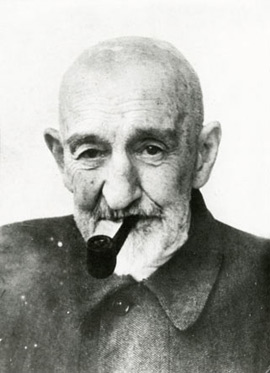ABRAMTSEVO IN THE 20th CENTURY┬Ā
Since 1900 Savva Mamontov lived mostly in Moscow, in a house on the 2nd Yamskoe Pole street that was bought in the mid-1890s for his daughter Alexandra. In 1896 the house hosted the Abramtsevo pottery that got the name the Abramtsevo Ceramic Plant and Savva Mamontov headed the enterprise. The goods of the plant took first place at the Russian and International Exhibitions, they adorned the Moscow buildings: the panel "Princess of Dreams" (1899ŌĆō1903) by Mikhail Vrubel was placed on the fa├¦ade of the hotel "Metropol", the panels by Konstantin Korovin representing the Russian North (1900s) were on the walls of the Yaroslavsky Railway Station, the frieze designed by Viktor Vasnetsov in 1903 was on the fa├¦ade of the Tretyakov Art Gallery. After the death of Yelizaveta Mamontova Abramtsevo was inherited by her daughter Alexandra. By that time the estate got a wide fame, many artists and art historians came there. In 1910, the Mamontovs' eldest son Sergey built the dacha called "Yasnushka" near the estate. The writers Ivan Bunin, Ivan Shmelev, the singer Fyodor Shalyapin and other famous contemporaries visited this place. The dacha did not survive. After the October Revolution, 1917, Abramtsevo was nationalized and turned into the Abramtsevo Museum Estate. Alexandra Mamontova became its first curator. At the beginning of the 1920s the Museum collection accounted for about 2 000 items. In 1932, the Museum was closed for public and a recreation center was organized at the estate territory. The stage director Grigory Alexandrov, the actress Lyubov Orlova, the composer Tikhon Khrennikov and other talented people visited this place. In 1933 on the opposite bank of the Vorya River the settlement of artists Novo-Abramtsevo was built. The painters Igor Grabar, Ilya Mashkov, the sculptor Vera Mukhina, Boris Korolyov and many other artists lived and worked there. In 1938, the Abramtsevo recreation center was transformed into a sanatorium for the staff of primary and secondary schools. During the Great Patriotic War (1941ŌĆō1945) the Museum exhibits were transferred to the State Historical and Artistic Museum in Zagorsk (today Sergiev Posad) and Abramtsevo was a military hospital.
In the post-war period two powerful organizations took an interest in Abramtsevo: the USSR Union of Artists and the USSR Academy of Sciences. The destiny of Abramtsevo was decided at the highest level. In 1947, the head of the Soviet Union Joseph Stalin received the president of the Academy of Sciences Sergey Vavilov and gave Abramtsevo under the authority of the Academy. The Abramtsevo estate got the status of the museum again but half of its territory was occupied by the academic sanatorium. Igor Grabar, the artist and art historian, the member of the Academy became the research supervisor of the place. 1375 exhibits arrived back to the Museum. In 1948, Vsevolod Mamontov became the Museum`s curator and started the renovation. In 1950, Amramtsevo opened its doors to the first visitors. In 1971, the former medical building, erected in the 1930s in front of the Manor House, hosted the department "Soviet Artists in Abramtsevo" (today "Russian Artists of the 20th Century in Abramtsevo"). In 1977, the Museum occupied the whole territory of the estate and got the up-to-date name ŌĆō the Abramtsevo State Historical, Artistic and Literary Museum-Reserve. In 1982, the premises of the previous gateway church of John the Baptist at the Northern gates of the Pokrovsky (Patronage of the Mother of God) Monastery in Khotkovo housed the Department of Restoration and Protection of the Museum Articles. In 1998, the Department moved to the building of the former monastery's hotel and it was called the Artistic and Regional Department. In 2007, it got a new name the Department of Arts and Crafts. In 1989, the territory of the recreation center ŌĆō the previous "Cultural settlement" of the Mamontovs ŌĆō was given to the Museum. In 1995, by the decree of the President of the Russian Federation the Museum got the status of an object of the historic and cultural heritage of federal importance. The fate of the Abramtsevo workshops was different. In the mid 1920s, the Abramtsevo Ceramic Plant became the training center of the VHUTEMAS (Higher Artistic and Technical Workshops) and then was re-equipped into the Experimental Laboratory of the Refractory Materials. The artistic base of the workshop was lost. In the 1920ŌĆō1930s, the Abramtsevo joinery passed through several reorganizations and moved to Khotkovo. In 1957, the Abramtsevo Artistic and Industrial School (today College) named after Viktor Vasnetsov was established at the basis of the workshop. ┬Ā
View the embedded image gallery online at:
http://abramtsevo.net/eng/history/abramtcevo-in-20th-.html#sigProGalleria950e5d057e |



